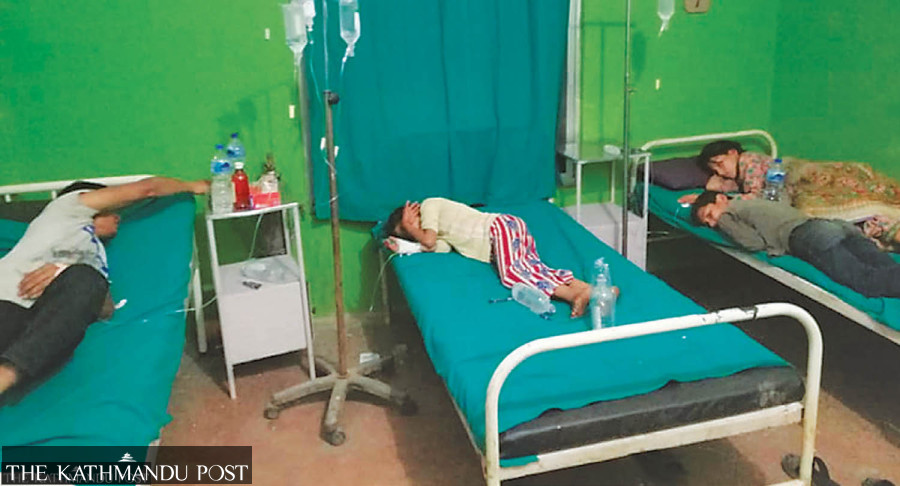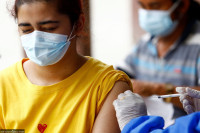Health
Diarrhoeal deaths increase over threefold
As many as 14 children under five years of age succumbed to diarrhoea in the fiscal year 2080-81, up from four the previous fiscal year.
Post Report
As many as 14 children under five years of age succumbed to diarrhoeal ailments in the fiscal year 2080-81 (2023-2024), a rise from four deaths in the previous fiscal year, according to data provided by the Ministry of Health and Population.
The rise is not limited to children under five years of age but also in the overall population. What concerns experts is an intensification of pre-monsoon rainfall activities throughout the country and the looming monsoon, in which most drinking water resources get contaminated with deadly microbes.
A study carried out by the health ministry following an outbreak last year showed that nearly 70 percent of drinking water samples in Kathmandu Valley were contaminated with deadly microbes E coli and faecal coliform.
Even bottled water gets contaminated with microbes.
“We have not prioritised personal hygiene and made people aware accordingly,” said Dr Baburam Marasini, former director at the Epidemiology and Disease Control Division. “It is unfortunate that people in our country still die of diarrhoeal ailments, and we have not taken the issue seriously.”
Diarrhoeal disease is a common and seasonal public health concern usually triggered by food and water safety or hygiene issues. It is one of Nepal’s leading causes of morbidity and mortality among young children.
Data shows that 127 children under five years of age in every 1,000 were hospitalised for the treatment of diarrheal infections in the last fiscal year, a rise from 115 in every 1,000 the previous year. Altogether, over 280,000 children of the age group were hospitalised in the last fiscal year for treatment of diarrheal diseases, a rise from around 270,000 children the previous year.
Doctors say that the real number of infections could be much higher than the recorded cases as over 90 percent of infected people do not reach the hospitals and take medication at home.
“Only those whose health conditions are serious seek hospital care,” said Dr Mukesh Poudel, chief of the Epidemiology and Outbreak Management Section at the division. “We don’t know the exact number of people infected with water-borne diseases, especially diarrhoea.”
Last year, Nepal witnessed a massive cholera outbreak during monsoon. At least 95 cases of cholera infection were confirmed in Kathmandu, Lalitpur, Kailali, Pyuthan, Makawanpur, Rolpa, Sindhupalchok, Achham and Rautahat districts.
Health officials said that the Vibrio cholera 01 Ogawa serotype was found in the stool samples of the infected patients. Hundreds of people suffered from the diarrhoeal infection that continued for months.
Health experts say that growing incidents of waterborne disease infections show poor water and sanitation conditions. A lack of personal hygiene and awareness of the risks is also blamed for rising infections from diarrhoeal ailments—including diarrhoea, dysentery, typhoid, hepatitis, and cholera—with thousands of people falling sick every year.
Doctors say an effective way to prevent people from dying of water-borne diseases, including diarrhoea, is to raise awareness and ensure safe drinking water.
“Authorities must continue investment in behaviour change, awareness, and improving drinking water quality and sanitation systems,” said Marasini. “Behavioural change towards hygienic practice and increased literacy and education levels are also important to lessen the disease burden.”
According to the World Health Organisation, diarrhoea is the second leading cause of mortality in children under five. The disease has also been linked with growth and cognitive shortfalls in children, especially in marginalised communities.




 8.12°C Kathmandu
8.12°C Kathmandu













